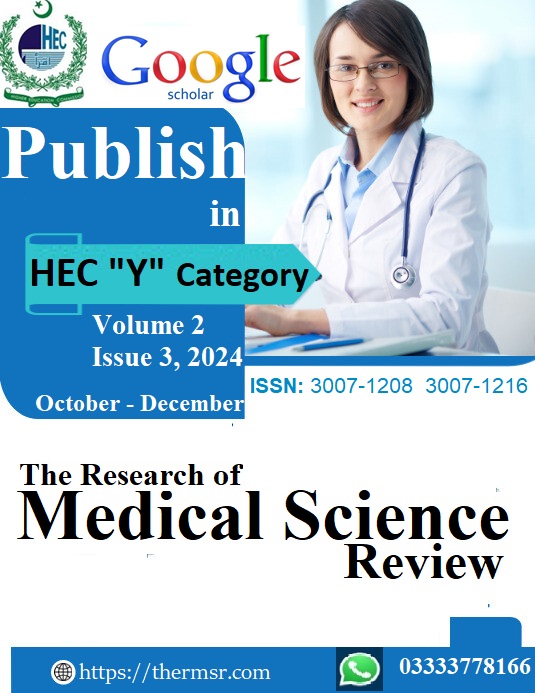COMPARISON OF EFFECT OF FERROUS SULFATE VS FERROUS GLUCONATE FOR THE TREATMENT OF IRON DEFICIENCY ANEMIA IN CHILDREN AGED 6 TO 36 MONTHS OLD
Keywords:
Iron Deficiency Anemia, Ferrous Sulfate, Ferrous Gluconate, Hemoglobin, Serum FerritinAbstract
Background: Iron deficiency anemia (IDA) remains the leading nutritional disorder among children globally, particularly in low-resource settings. It can impair physical growth, mental development, and immune response. Children aged 6 to 36 months are especially prone to developing IDA due to rapid growth and insufficient iron intake. Although oral iron supplements are commonly used for treatment, the effectiveness and side effect profiles of different iron compounds need further clarification. Objective: This study aimed to compare the effectiveness and tolerability of ferrous sulfate (FS) and ferrous gluconate (FG) in the treatment of IDA in children between 6 and 36 months of age by measuring changes in hemoglobin and serum ferritin levels after six weeks of therapy. Methods: A randomized controlled trial was carried out at The Children’s Hospital and Institute of Child Health, Lahore. Seventy children aged 6–36 months diagnosed with IDA (hemoglobin <10 g/dL, serum ferritin <10 ng/mL) were enrolled and randomly divided into two groups. In group A 2mg/kg/day ferrous sulfate and in group B 2mg/kg/day ferrous gluconate were given. Treatment was administered daily for six weeks. Hemoglobin and ferritin levels were recorded at the start and end of the study. Compliance and adverse effects were monitored weekly. Statistical analysis was performed using paired and unpaired t-tests. Results: A total of 70 children were randomized into two groups (35 per group). Baseline demographic and clinical characteristics were similar (p > 0.05). After 6 weeks of treatment, both groups showed significant improvements in hemoglobin and ferritin levels (p < 0.001). However, the ferrous gluconate group demonstrated a significantly greater increase in hemoglobin (1.71 ± 0.12 g/dL vs. 1.33 ± 0.30 g/dL, p = 0.001) and ferritin (33.02 ± 3.46 ng/mL vs. 30.07 ± 5.33 ng/mL, p = 0.004). Stratified analysis by age group (6–18 months and 19–36 months) also favored ferrous gluconate, with statistically significant improvements in both age groups (p < 0.05). Conclusion: Ferrous gluconate was found to be more effective and better tolerated than ferrous sulfate for treating iron deficiency anemia in young children. Its superior outcomes and reduced side effects suggest that it may be a more suitable treatment option for this age group. Further large-scale studies are recommended to validate these findings and evaluate long-term effects.
Downloads
Downloads
Published
Issue
Section
License

This work is licensed under a Creative Commons Attribution-NonCommercial-NoDerivatives 4.0 International License.














